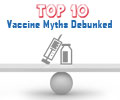A vaccine not yet licensed in the United States produces immunity against four strains of meningococcal disease and is well tolerated when administered to infants
A vaccine not yet licensed in the United States produces immunity against four strains of meningococcal disease and is well tolerated when administered to infants, according to a study in the January 9/16 issue of JAMA.
It is estimated that 1,400 to 2,800 cases of invasive meningococcal disease occur in the United States each year, and that ten to 14 percent of people who contract the disease will die. The U.S. Advisory Committee on Immunization Practices now advises immunization with a tetravalent vaccine (serogroups A, C, W-135, and Y) for all 11- to 18-year-olds. However, the currently licensed vaccine is poorly immunogenic in infancy, when the highest rates of disease are observed, according to background information in the article.Matthew D. Snape, F.R.A.C.P., of the Oxford Vaccine Group, University of Oxford, England, and colleagues conducted a randomized controlled study to determine the immunogenicity of a novel tetravalent meningococcal vaccine known as MenACWY in infants. Unlike the currently licensed vaccine, MenACWY uses a natural mutant of the diphtheria toxin.
The study included 421 healthy infants in the United Kingdom and Canada who received one of three different dosing schedules of MenACWY, or a monovalent vaccine against the meningitis C serogroup. The authors determined the proportion of babies who had protective antibody levels after receiving the vaccine. They also assessed vaccine safety and reactogenicity (the capacity to produce adverse reactions).
“In this study, we have demonstrated that a primary immunization course of the novel tetravalent meningococcal glycoconjugate vaccine MenACWY was well tolerated and immunogenic for serogroups A, C, W-135, and Y when given to healthy infants at either two, three, and four months or two, four, and six months of age,” the authors write.
The study found that at least 92 percent of infants who received the two-, three-, four-month schedule had protective antibody levels to all four serogroups. For the two-, four-, six-month schedule, similar results were obtained for the C, W-135, and Y serogroups, but the proportion of infants with protective antibody levels against serogroup A was lower at 81 percent.
In the two-, four-month primary series groups, at least 84 percent had protective antibody levels to three of the four serogroups, while 60 to 66 percent of infants had protective levels against serogroup A. After a booster dose at 12 months, at least 95 percent developed protective antibody levels to three of the four serogroups, and 84 percent for serogroup A.
Advertisement
Source-Eurekalert
LIN/P








